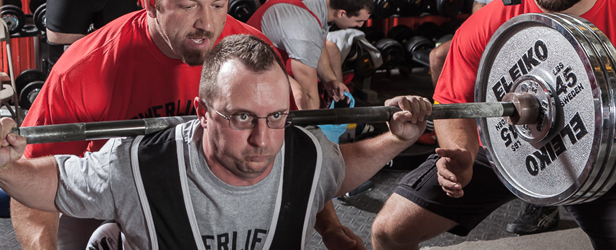
elitefts™ Sunday Edition
Yes, I realize that “real powerlifters don’t have abs.” Powerlifters often pride themselves on being bloated, but that doesn’t mean that we should neglect our abdominal muscles and not train one of the most important muscular groups in our bodies.
The basic structure of the rectus abdominis (abdominal muscle) is that it is a long flat muscle, which extends along the whole length of the front of the abdomen from the rib cage to the pelvis separated from its fellow of the opposite side by the linea alba. When you recruit one of its muscle fibers, you recruit all of them. Isolating the upper or lower abs is simply a myth. People tend to hold more fat in the lower abdominal area. Trying to isolate the muscle isn’t going to make you lose fat there, but that’s information for an entirely different article.
The basic function of the rectus abdominis is that it is a postural muscle. It is responsible for helping to keep us upright (in conjunction with the lower back muscles such as the erector spinae) during movements such as a squat and deadlift. It also flexes the lumbar spine by essentially squeezing the mid-section together both when the pelvis is fixed as with a crunching motion or the pelvis can be brought towards the rib cage as with a posterior pelvic tilt. The two can also be brought together simultaneously when neither is fixed in space.
Yes, you strengthen your rectus abdominis indirectly through a static contraction during any movement where you’re standing upright, but that doesn’t mean you shouldn’t isolate it with specific movements as well. I recommend performing primarily standing crunching motions since this is the position you’re in during a squat and deadlift. It can also mimic the position you’ll get stuck in if your rectus abdominis is weak. I also recommend performing these movements with resistance such as a standing cable or band crunch where you can’t perform more than 12 to 15 reps. The 8 to 12 rep range is ideal for a combination of hypertrophy and strength gains. A rep range much higher than this is going to essentially train your rectus abdominis for endurance and not strength.
Main Points:
- The abs are one sheet of muscles running from the rib cage to the pelvis.
- The abs help to keep you upright and to squeeze the mid-section together.
Do this:
- Perform primarily standing movements with resistance such as cable and band ab crunches to mimic the position of the squat and deadlift.
- Find a resistance where you can’t perform more than 12 to 15 reps at the most.
- Since you strengthen your abs during the squat and deadlift, do only two to three sets per week.
- Make sure to exhale on the exertion of the movement such as when the weight is going away from the stack. This will help to tighten your abs during the motion.
Thanks for reading and never give up!








